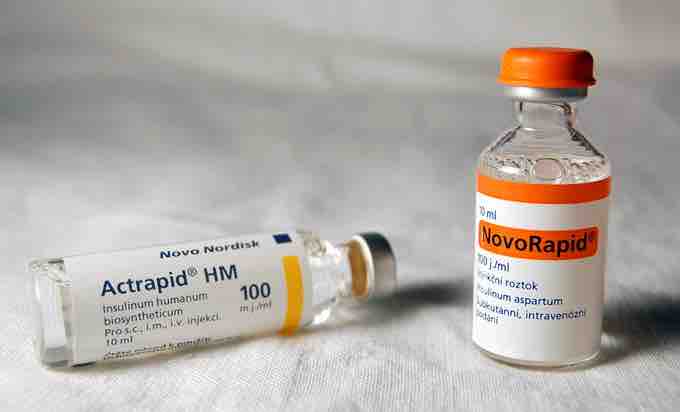The first successful products of genetic engineering were protein drugs like insulin, which is used to treat diabetes , and growth hormone somatotropin. These proteins are made in large quantities by genetically engineered bacteria or yeast in large "bioreactors. " Some drugs are also made in transgenic plants, such as tobacco. Other human proteins that are used as drugs require biological modifications that only the cells of mammals, such as cows, goats, and sheep, can provide. For these drugs, production in transgenic animals is a good option. Using farm animals for drug production has many advantages because they are reproducible, have flexible production, are easily maintained, and have a great delivery method (e.g. milk).

Synthetic Insulin
human insulin produced by recombinant DNA technology.
Recombinant DNA technology not only allows therapeutic proteins to be produced on a large scale but using the same methodology protein molecules may be purposefully engineered. Genetic modifications introduced to a protein have many advantages over chemical modifications. Genetically engineered entities are biocompatible and biodegradable. The changes are introduced in 100% of the molecules with the exclusion of rare errors in gene transcription or translation. The preparations do not contain residual amounts of harsh chemicals used in the conjugation process. Bacterial expression systems, due to their simplicity, are often not able to produce a recombinant human protein identical to the naturally occurring wild type. Bacteria did not develop sophisticated mechanisms for performing post-translational modifications that are present in higher organisms. As a consequence, an increasing number of protein therapeutics is expressed in mammalian cells. However the low cost and simplicity of cultivating bacteria is an unbeatable advantage over any other expression system and therefore E. coli is always a preferable choice both on a lab scale and in industry.
Many mammalian proteins are produced by genetic engineering. These include, in particular, an assortment of hormones and proteins for blood clotting and other blood processes. For example, tissue plasminogen activator (TPA) is a blood protein that scavenges and dissolves blood clots that may form in the final stages of the healing process. TPA is primarily used in heart patients or others suffering from poor circulation to prevent the development of clots that can be life-threatening. Heart disease is a leading cause of death in many developed countries, especially in the United States, so microbially produced TPA is in high demand. In contrast to TPA, the blood clotting factors VII, VIII, and IX are critically important for the formation of blood clots. Hemophiliacs suffer from a deficiency of one or more clotting factors and can therefore be treated with microbially produced clotting factors. In the past hemophiliacs have been treated with clotting factor extracts from pooled human blood, some of which was contaminated with viruses such as HIV and hepatitis C, putting hemophiliacs at high risk for contracting these diseases. Recombinant clotting factors have eliminated this problem.